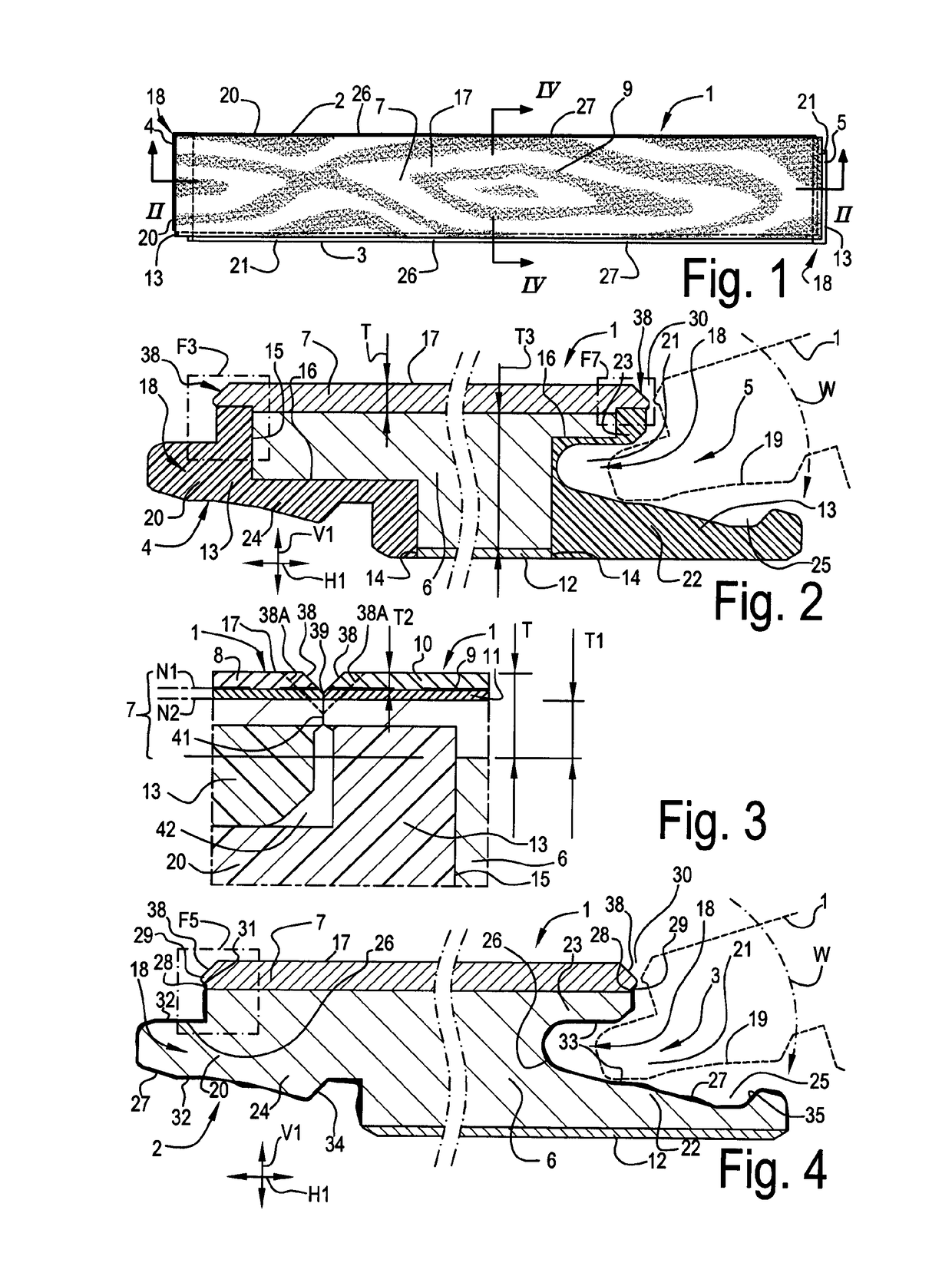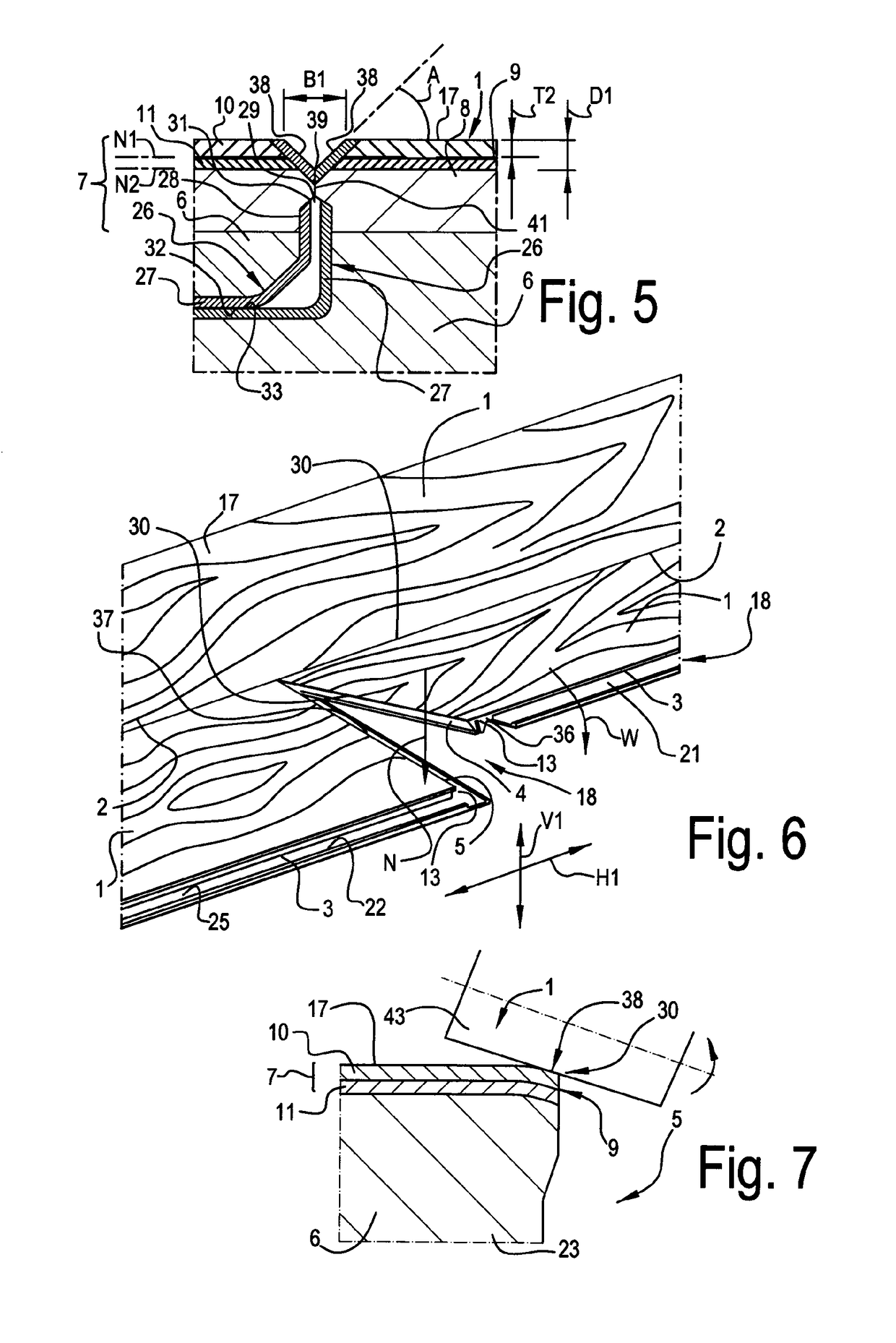Floor panel
a technology for floor coverings and panels, applied in the field of floor coverings, can solve the problems of reducing the view of the print, occurrence of ticking noise, lack of transparency, etc., and achieve the effect of reducing the risk of the occurrence of migration effects from the underlying layer to the surface of the floor covering, easy availability, and good resistance to water or moistur
- Summary
- Abstract
- Description
- Claims
- Application Information
AI Technical Summary
Benefits of technology
Problems solved by technology
Method used
Image
Examples
Embodiment Construction
[0081]FIG. 1 represents a floor panel 1 with the characteristics of, amongst others, the first aspect of the invention. In this case, this relates to a rectangular and oblong floor panel 1 with a pair of long sides or edges 2-3 and a pair of short sides or edges 4-5.
[0082]FIG. 2 represents that the floor panel 1 is of the type which comprises at least a substrate 6 and a top layer 7 provided thereon. In the example, the top layer 7 has a thickness T of at least 0.5 millimeters. Here, specifically an annealed thermoplastic top layer is concerned, which substantially consists of PVC.
[0083]FIG. 3 shows that the thermoplastic top layer 7 preferably as such is composed of a back layer 8, a provided thereon motif 9 and a transparent thermoplastic layer or wear layer 10. Herein, the back layer 8 preferably covers a thickness T1 of more than 45 percent of the overall thickness T of the top layer 7. In this case, the back layer 8 consists of a layer of soft recycled PVC, which is filled with...
PUM
| Property | Measurement | Unit |
|---|---|---|
| angles | aaaaa | aaaaa |
| length | aaaaa | aaaaa |
| length | aaaaa | aaaaa |
Abstract
Description
Claims
Application Information
 Login to View More
Login to View More - R&D
- Intellectual Property
- Life Sciences
- Materials
- Tech Scout
- Unparalleled Data Quality
- Higher Quality Content
- 60% Fewer Hallucinations
Browse by: Latest US Patents, China's latest patents, Technical Efficacy Thesaurus, Application Domain, Technology Topic, Popular Technical Reports.
© 2025 PatSnap. All rights reserved.Legal|Privacy policy|Modern Slavery Act Transparency Statement|Sitemap|About US| Contact US: help@patsnap.com



